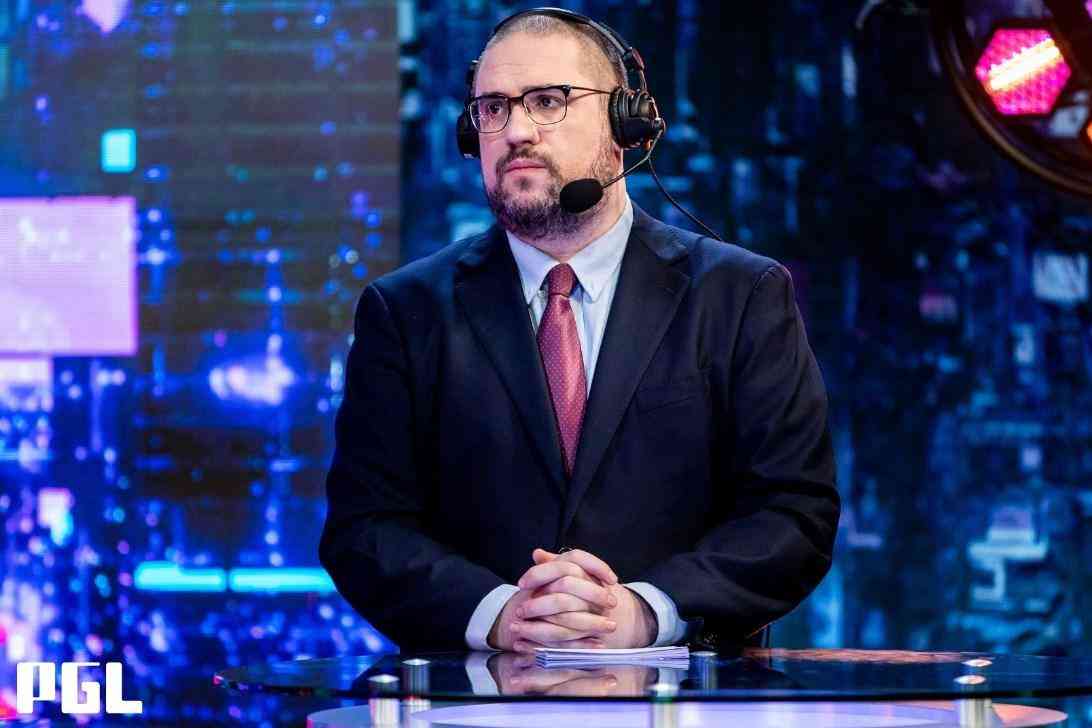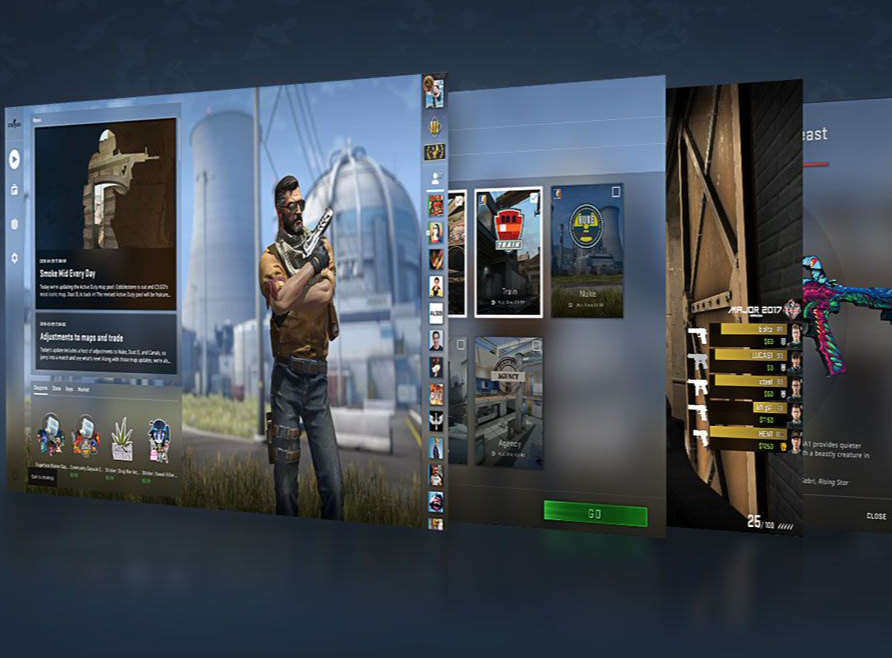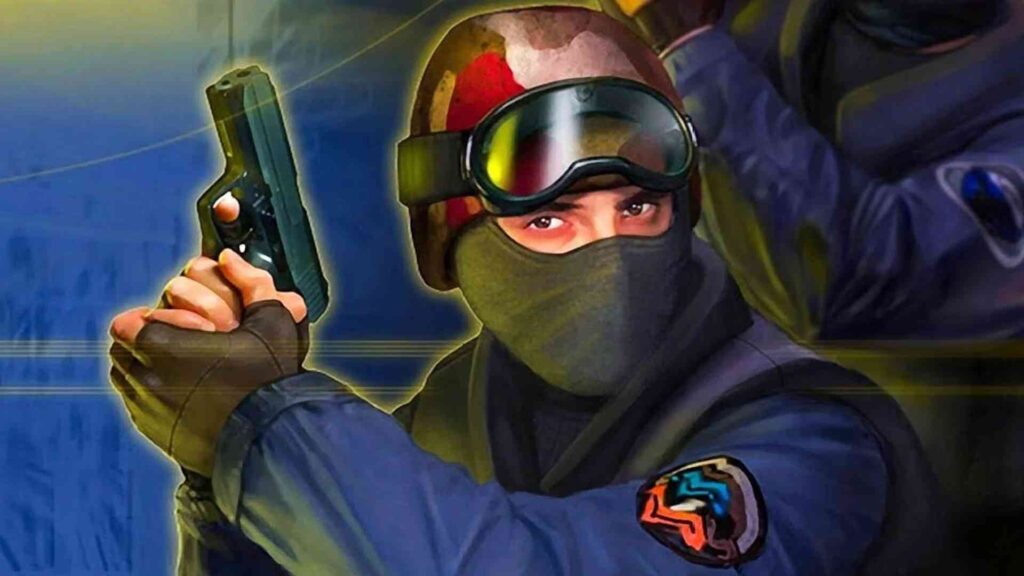The long-awaited Source 2 engine is finally supposedly coming to CS:GO in March, but what would it mean for Counter-Strike? Is it truly time for CS:GO 2?
In recent weeks, a variety of news stoked the flames of the Source 2 hype train. Everything started on March 2, when well-known data miner Aquarius revealed that the latest NVIDIA Drivers featured a Game Profile page for ‘Counter-Strike 2’. NVIDIA updates have been involved in highly anticipated game leaks for years, including the PC ports of God of War (2016) and Returnal. In this case, Aquarius revealed that the names of the executables would be csgos2.exe and cs2.exe.
Multiple reliable sources have since come out stating that Counter-Strike 2, or Source 2 for CS:GO, will launch sometime in March. According to insider Maxim ‘GabeFollower’ Poletaev, ‘Valve has been testing CS:GO on Source 2 with the help of third-party QA companies in the US and EU since at least early December’. Meanwhile, others have claimed professional players were invited to Valve HQ in Seattle to test the new engine first-hand.
Contents
Is CS:GO Source 2 / Counter-Strike 2 coming out soon?
The answer to this question is likely to be yes. Valve has left a path of breadcrumbs over the past few years, heavily implying they have been working on porting Counter-Strike: Global Offensive to Source 2. Now, respected investigative esports journalist Richard Lewis has confirmed this transition on his Substack page. Speaking with anonymous sources, Lewis was able to confirm that ‘Counter-Strike 2’ is expected to be released in Beta in March, with April 1 as the deadline.
Whether this means the game will receive an update, or a different product will be released alongside it, is still unknown. Looking at Valve’s track record, Dota 2 had two different clients during its transition to Source 2, fueling speculation of a similar treatment.
 Investigative journalist Richard Lewis has finally given us some reliable information on Source 2. Copyright: PGL | Stephanie Lindgren
Investigative journalist Richard Lewis has finally given us some reliable information on Source 2. Copyright: PGL | Stephanie LindgrenWill CS:GO 2 be a new game?
In all likelihood, Source 2 will simply be a radical update of the existing Counter-Strike: Global Offensive. We have however received mixed information on the topic: Richard Lewis has claimed the product will be released under the working title of Counter-Strike 2, meanwhile, GabeFollower has come out to openly state that ‘It won’t be a new game, it won’t be Counter-Strike 2, it won’t be even a rebrand, just CS:GO Source 2’. Having the same base product would also mean leaving the skin economy untouched, an aspect many players are currently worried about.
Read more: CS:GO reaches new all-time peak of concurrent players
It’s however unlikely that Valve will release a replacement or a competing product to their own juggernaut shooter, repeating the mistake made with Counter-Strike 1.6 and Counter-Strike: Source. As a game, CS:GO is still breaking player count records almost monthly. For what concerns CS as an esports title, the pandemic has revitalized a decreasing viewer base and allowed the game to easily handle competitors such as VALORANT. It would be a strange business decision to transition to a new product, especially as the competitive scene would require time to adjust.
What is Source 2?
Source 2 is Valve’s latest game engine, officially completed in 2015 to replace the classic 2004 Source engine Counter-Strike: Global Offensive was developed on. The first game to officially be based on the engine was actually a pre-existing title, Dota 2, which was updated to Source 2 in 2015 through the ‘Dota Reborn’ DLC. The update brought a variety of features and quality-of-life improvements, such as a new interface, similar to what CS:GO experienced in its 2018 Panorama Update, and much-requested custom games. The Source 2 version was developed as a separate client, only merging with the original after months of polishing.
Source 2 found itself back in the spotlight when Valve showcased the engine’s great VR capabilities with 2020’s Half-Life: Alyx. The game was a massive commercial success and still stands as one of the most technically impressive virtual reality games produced yet. The game’s systems highlighted the great depth and potential of Source 2’s toolset, especially its physics engine, named Rubikon. Of particular interest for CS:GO, Source 2 features a completely reworked version of Hammer, Valve’s level editor.
What could Source 2 mean for CS:GO?
It’s hard to guess what such a substantial change this might mean for CS:GO. First and foremost, it’s important to understand that Source 2 is primarily just a set of tools with a wide variety of potential applications, and it will be Valve’s job to choose to what extent the game should be changed. Players shouldn’t expect complete graphical or mechanical overhauls. As Valve president Gabe Newell has stated multiple times, the company’s goal is to use the Source 2 technology to help iron out some long-standing issues and lack of QOL functions.
Although Richard Lewis mentioned that the update ‘is likely to come at a cost of performance for players with low-end PCs’, Source 2 functionalities have already been progressively implemented to CS:GO. For what concerns the UI, Valve took a massive step forwards with the Panorama UI in 2018, leading to a fresher and more modern look. Further optimizations and changes might still be in place, especially for what concerns UI responsiveness, but the groundwork laid five years ago is unlikely to be scrapped for a complete overhaul.
 Panorama UI
Panorama UIThe main updates will concern the quality-of-life changes. Among them, we can expect noticeable optimization improvements, especially on more demanding maps, and cleaning up of messy or unnecessary code. Better multi-core support, more responsive inputs with lower latency, and general performance improvements are to be expected. Support for newer versions of DirectX, like 11 and 12, will especially help in this regard. Furthermore, the Beta version of CS2 is supposed to give Valve time to iron out some of the most common bugs which have been affecting the game for years.
Read more: Breaking down Valve – Coach relations in CS:GO
For what concerns matchmaking, Counter-Strike 2 is expected to feature 128-tick servers, putting the game on par with a variety of third-party products and services like FACEIT and ESEA. Furthermore, big changes are expected to the matchmaking systems themselves, with players hoping it will reduce rank disparity in matches and wait times. The update will include a ranking system overhaul, which according to CIS insider Alexsey ‘OverDrive’ Biryukov will ‘kill FACEIT, ESEA, etc.’
CS:GO Source 2: physics engine, map editing, skin tools
Continuing with the Rubikon physics engine, this would affect item drops, such as weapons and the bomb, and player-model ragdolls. The main improvements should be the ones concerning performance, as Rubikon is much more efficient in real-time physics simulations even when dealing with dozens of physics objects (such as player bodies) on the screen. While this is unlikely to have a meaningful effect on a regular CS:GO match, custom maps and game modes will benefit from it, and stability improvements are always welcome.
The entire Source Development Kit (SDK) will receive a massive boost and streamlining from the update, especially in the form of Source 2’s Hammer editor. Being an updated version of the original product, it already features a variety of quality-of-life improvements like being able to scale any prop or physics object in any dimension, or better pre-baked lightning on surfaces. Furthermore, developers will be able to make use of Vulkan APIs and new render APIs in DirectX 11 or 12. Even for skin creators Source 2 might be a big change, as it might mean new tools such as PBR textures become available.



